Warning: include(../headeren.php): failed to open stream: No such file or directory in /data/web/virtuals/3784/virtual/www/infinity/indexen.php on line 6
Warning: include(../headeren.php): failed to open stream: No such file or directory in /data/web/virtuals/3784/virtual/www/infinity/indexen.php on line 6
Warning: include(): Failed opening '../headeren.php' for inclusion (include_path='.:/data/web/virtuals/3784/virtual') in /data/web/virtuals/3784/virtual/www/infinity/indexen.php on line 6
A way to infinity
A way to infinity is a short documentary for digital planetaria,
about what is infinity
and if the Universe is infinite.
It is intended for older pupils and adult visitors.
There exist Czech and English language versions.
We chose a shorter footage of 14 minutes,
due to a planned sequel "A way to zero".

Screenshots
As a preview, we prepared static circular images in full resolution,
which should be projected onto a hemisphere tilted by 17°.
Objects appear distorted, but if a visitor sits in our planetarium
in the middle of the auditorium, the geometry of the resulting image is without distortions.
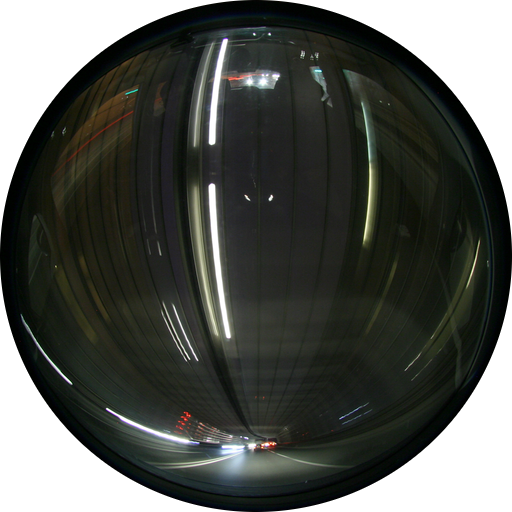
|
|
Rush and hurry, shown as a drive across Hradec Kralove.
Captured by Canon 350D DSLR camera with fisheye lens Sigma EX 4.5 1:2.8 DC HSM,
f = 4,5 mm, texp = 1/2 s, f/4,5, ISO 400 ASA.
|

|
|
An observation from the terrace of the observatory
on November 6th 2011 16 h 14 min to 17 h 2 min.
The same equipment, but
texp = 8 s, f/2,8, ISO 200 ASA.
|

|
|
A simple illustration of a circle and an infinite orbiting.
A simple program in Povray (SDL) language...
|
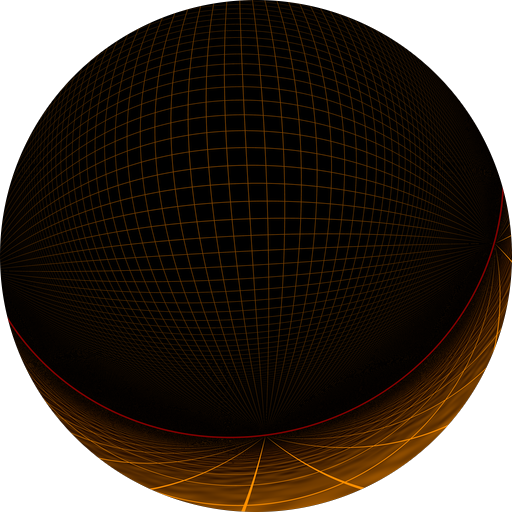
|
|
A illustration of infinity behind unreachable horizon.
|
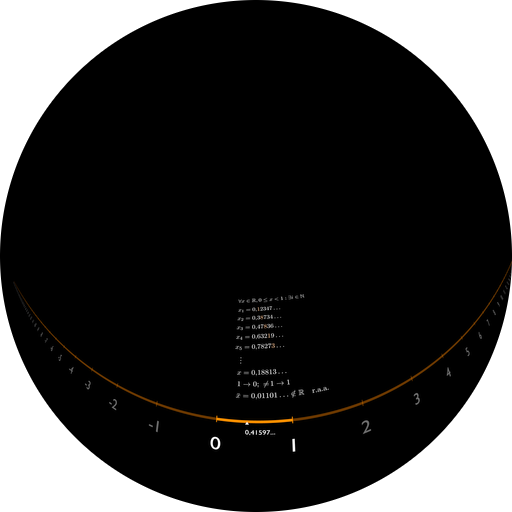
|
|
A number line.
Infinite number of real numbers on the interval [0; 1) is uncountable,
as evidenced by Cantor diagonal proof (by a contradiction, reductio ad absurdum).
|

|
|
An infinite limit of the function f(x) = 1/|x| for x approaching zero;
soon a mathematical definition will be shown.
|
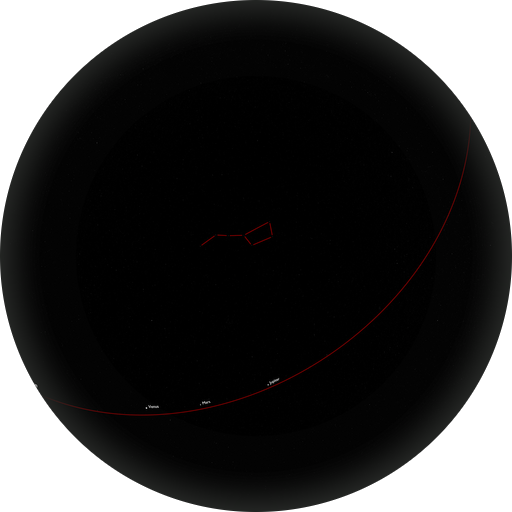
|
|
A starry sky above Hradec Kralove.
The horizon was captured from water tower, with individual snapshots stitched by Ptgui program.
Stars were generated from Tycho catalogue.
Positions of planets with respect to the ecliptic were computed according to JPL DE405 elements.
|
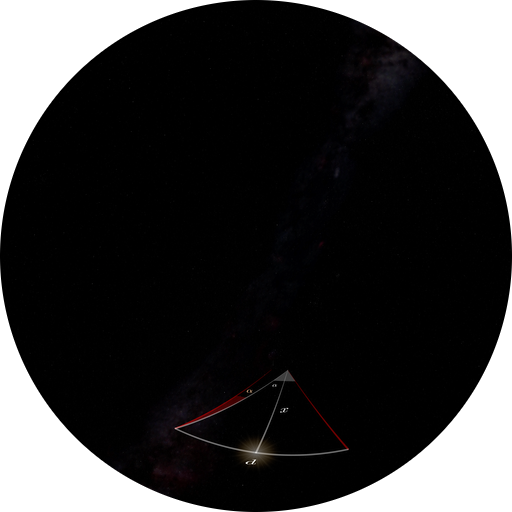
|
|
A measurement of a parallax of Rigel star, to show as clearly as possible,
what exactly is measured: a change of the direction towards the star (angle alpha).
(Even more exactly, mutual angular distances of stars are measured
by two telescopes located on a satellite like Gaia.)
|
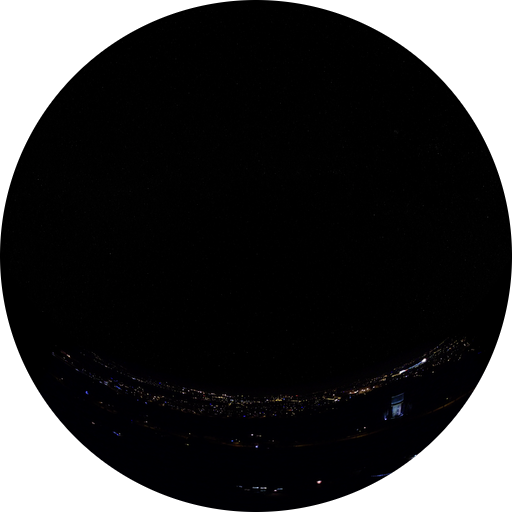
|
|
A view on Hradec Kralove town from a height of 120 metres,
captured by DJI Phantom 3 Professional drone with a stabilised 4K (UHD) camera;
field of view 94°, texp = 1/25 s, f/2,8, ISO 3200 ASA.
A final focussing was achieved by Lucy-Richardson deconvolution, with help of Gmic program.
|

|
|
A dark sky generated in Povray from Tycho catalogue, i.e. from Hipparcos satellite data.
At the same time all Messier catalogue objects are plotted, if they are above horizon.
Trees in the foreground should evocate an atmosphere of the Eagle Mountains.
|
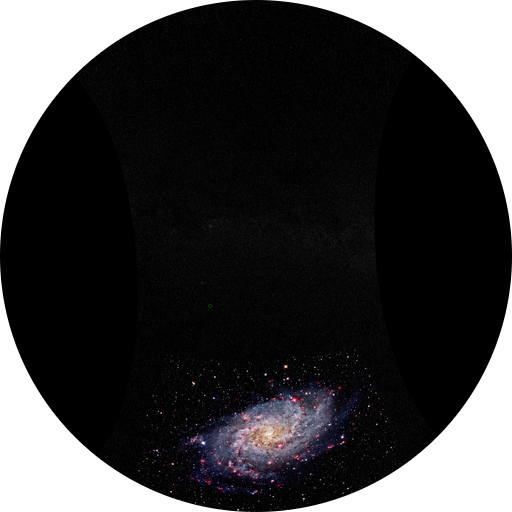
|
|
A sky as would be seen by binoculars
and a progressively appearing image of M33 galaxy,
as captured by Martin Myslivec.
It was acquired at Belec nad Orlici observatory,
using a relatively small telescope with 300 mm in diameter,
f = 1200 mm,
with a CCD camera G2-8300
and filters Baader L,R,G,B and 7nm H-alpha.
The total exposure was several tens (!) of hours.
|
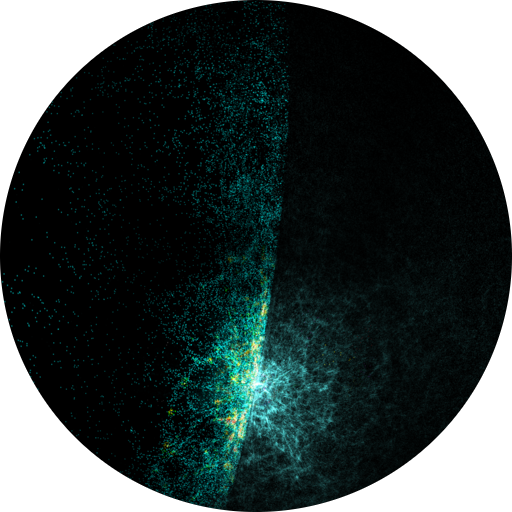
|
|
Galaxies and quasars from SDSS and 2dF catalogues,
with large-scale structure of the Universe visible.
The surveys do not cover all directions and they are always limited by a certain brightness,
which is the reason that galaxies are not seen everywhere.
The distance from which the situation is observed is up to 2.4 billion light years.
|
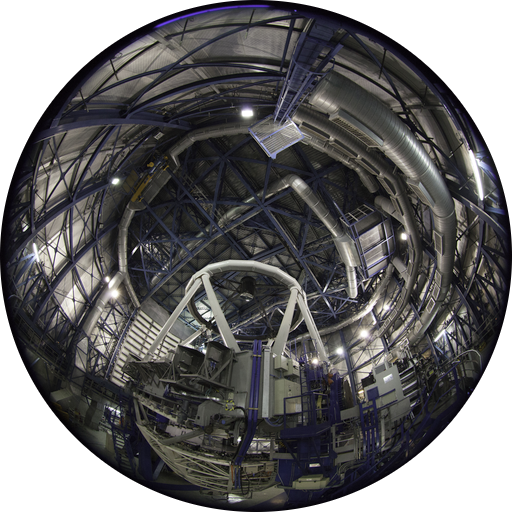
|
|
The Very Large Telescope on Mt. Paranal in Chile
and an observation with adaptive optics.
Taken from ESO.
|
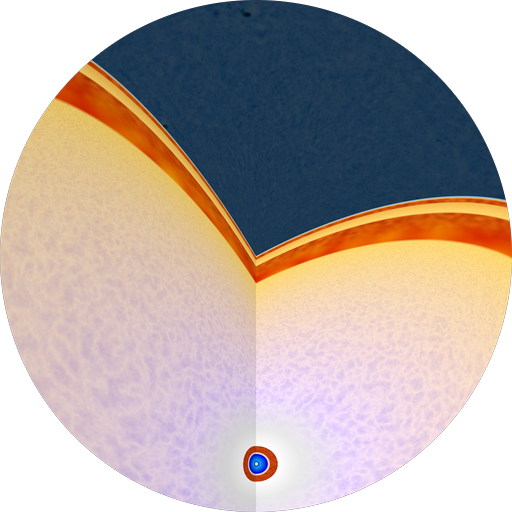
|
|
An internal structure of Rigel star computed by Mesastar program
and then converted to Povray. Different moving textures were chosen
for zones of radiative equilibrium and convective zones.
|
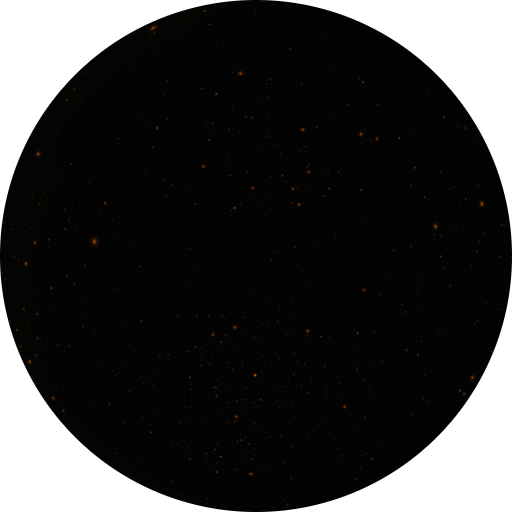
|
|
Red dwarfs inside the globular cluster M13,
which was created for the Uniview environment.
|

|
|
The Olbers paradox shown as light gradually coming from all directions.
A simple program in Povray.
|
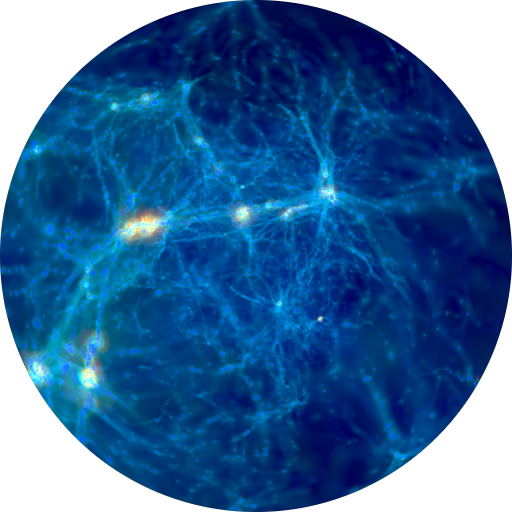
|
|
A simulation of large-scale structure evolution, including the feedback of stars and galaxies.
Taken from Illustris project.
|
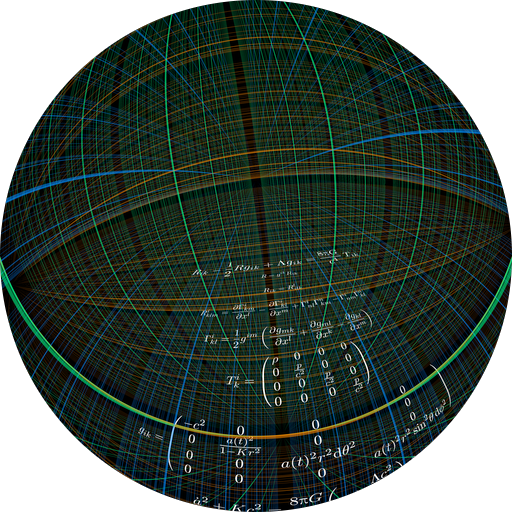
|
|
Spatial coordinates x, y, z
in an expanding space.
Einstein field equations,
Riemann tensor,
Ricci scalar,
Christoffel symbols,
energy and momentum tensor ,
FLRW metric (for homogeneous and isotropic universe)
and Friedmann equations
which determine the evolution of the expansion factor a(t).
|

|
|
The surface of the last scattering, observed by Planck satellite as the cosmic microwave background,
and of photons towards an observer for the duration of the Universe.
The coordinates continue beyond.
There is an expansion of space and large-scale structure shown too,
a simplified version as a volumetric texture in Povray.
|
Download
The movie is prepared in Full-dome 4K format
(i.e. 4096 × 4096 pixels resolution),
with a frame rate 30 fps.
It is possible to download a ZIP archive with individual images (dome masters),
which are to be converted for a given projection system.
We use a system delivered by Carl Zeiss Jena, with five Velvet projector
- each having 2560 × 1600 pixels,
native contrast 1 : 2.5 million
and special lens for a projection onto a spherical screen.
We should emphasize this is a really large file,
which is located at the WWW server of the Astronomical Institute of Charles University:
We also offer a Czech and English audio track in Dolby Digital 5.1 format,
written scenarios in Czech and English, and finally complete source codes:
About the movie
Most of animations in the movie were created in Povray (SDL) language.
A~rendering was performed at the computational cluster of the Astronomical Institute of Charles University.
Nevertheless, we also used different technologies:
live snapshots by a DSLR camera with fisheye lens,
aerial video from a drone equipped with 4K (UHD) camera,
or generated by SCISS/Uniview simulator.
In two cases, we utilized animations downloaded from the European Southern Observatory (ESO).
There sounds a jazz music by Kevin MacLeod (incompetech.com) in the movie, which is a bit unconventional,
but we chose it so to perfectly correspond to the topics discussed in the movie.
One song is from Chris Martyn a Geoff Harvey (purple-planet.com).
Narration recordings were edited with help of Audacity program.
A mix of narration and music was performed in Blender.

 - AC3, 47 MB
- AC3, 47 MB
 - AC3, 47 MB
- AC3, 47 MB
 - PDF, 68 kB
- PDF, 68 kB
